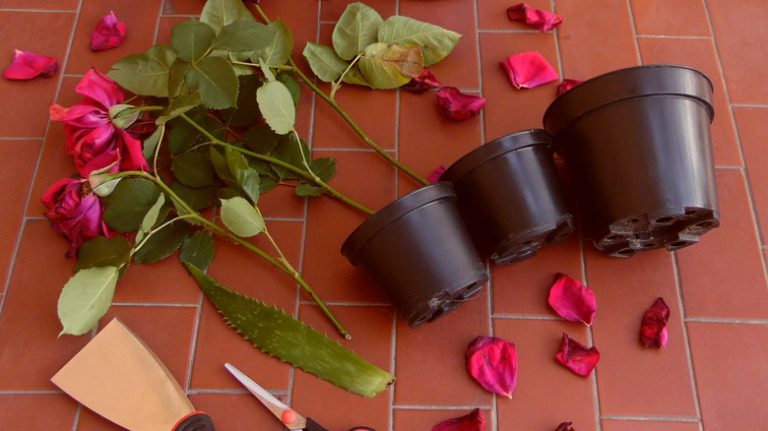Carnation flowers are beautiful and fragrant blooms that have been cherished for centuries. They are a popular choice for weddings and other special occasions due to their long-lasting and showy appearance. Carnations come in various colors, sizes, and types, making them versatile for different floral arrangements and decorations.
Cultivation of carnations involves several steps that need to be carefully followed. Propagating them from cuttings is a common method, where sections of a stem are rooted to create new plants. This technique requires some gardening skills, as it is important to provide the right conditions for germination and growth. Carnations prefer well-drained soil and the availability of adequate sunlight and water. They should be placed in an area with good air circulation to prevent overcrowded conditions that can lead to disease and insect infestations.
One of the key factors in ensuring the health of carnations is proper watering. They should be watered in the morning to allow the soil to dry out during the day. Over-watering can cause the roots to rot, while under-watering can lead to wilting and stunted growth. Adding neem oil to the water can help protect the plants from pests and diseases.
Carnations are known for their spicy fragrance, which varies depending on the cultivar. Some popular types include the Moonvista, Moonlight, and Moonaqua cultivars. These flowers can also be used to create stunning arrangements when mixed with other blooms like dahlias and eucalyptus. Dahlias, with their large and showy heads, add a touch of elegance to any arrangement, while eucalyptus provides a nice contrast with its greenery and scent.
In recent years, there has been an increased interest in the biotechnology of carnations. Researchers are exploring ways to genetically modify these flowers to improve their colors, fragrance, and resistance to diseases. This has the potential to create new cultivars that may have better chances of surviving in different climates and environments.
Whether it’s for a wedding, a special occasion, or simply to brighten up your home, carnation flowers are a great choice. They are not only beautiful but also have the ability to evoke memories and emotions. So, next time you see a carnation, remember the steps involved in their cultivation, the care they need, and the potential they hold to create stunning floral arrangements.
How to Plant, Grow, and Care For Carnation Flowers
Carnation flowers are a popular choice for gardeners due to their enchanting fragrance, vibrant colors, and long-lasting blooms. If you’re looking to add these beautiful flowers to your garden or containers, follow these steps to ensure proper planting, growth, and care:
Planting Carnation Flowers
When planting carnation flowers, it’s important to choose a location that receives plenty of sunlight, as they thrive in full sun. Prepare the soil by enriching it with compost or well-rotted manure to provide the necessary nutrients for healthy growth. Carnations prefer well-draining soil, so ensure proper drainage to avoid waterlogged conditions that could lead to diseases.
Next, carefully dig a hole slightly larger than the root ball of the carnation plant. Gently place the plant in the hole, making sure the crown (where the stems meet the roots) is level with the soil surface. Backfill the hole with soil, firming it gently around the plant.
Growing Carnation Flowers
Carnation flowers are fairly easy to grow, but they require a bit of care. Water the plants thoroughly and deeply, ensuring the soil remains evenly moist but not waterlogged. Avoid overhead watering to prevent fungal diseases. Mulching around the plants can help retain moisture and prevent weed growth.
As the carnation plants grow, they may require support to prevent their tall stems from bending or breaking. You can use stakes or small trellises to provide support as needed. Regularly deadhead the faded flowers by removing them by hand. This encourages the plant to produce more flowers and prevents the development of seed pods that divert energy from blooming.
Caring for Carnation Flowers
To ensure the health and vitality of your carnation flowers, it’s important to provide them with proper care. Carnations are susceptible to a few pests and diseases, such as aphids and bacterial spots. Regularly inspect your plants for any signs of pests or diseases, and take prompt action to treat them. Organic sprays like neem oil can be effective against pests and diseases.
Remember to fertilize your carnation plants regularly to provide them with necessary nutrients. Use a balanced fertilizer formulated for flowering plants and follow the instructions on the packaging carefully. Prune any dead or diseased parts of the plant to maintain its overall health and appearance.
Symbolism and Uses of Carnation Flowers
Carnation flowers have a rich symbolism and many uses. These flowers are often associated with love and fascination, especially the red and pink varieties. They are a popular choice for weddings, bouquets, garlands, and floral arrangements. In France, carnations are a traditional gift for Mother’s Day. The different colors of carnations also hold specific meanings – yellow for disappointment, white for luck, orange for enthusiasm, and burgundy for deep love.
In addition, carnations are often used in the perfume industry due to their spicy and fragrant aroma. The long-lasting blooms make them a favorite among flower enthusiasts and florists for creating stunning floral displays.
Whether you’re a beginner or an experienced gardener, carnation flowers can be a delightful addition to your garden. With proper planting, cultivation, and care, you can enjoy their showy blooms and enchanting fragrance for years to come.
About Carnations
Carnations, also known as Dianthus caryophyllus, are lovely flowers that are widely used for their vibrant blooms and fragrant foliage. They belong to the family Caryophyllaceae and are native to the Mediterranean region. Carnations are well-known for their long-lasting flowers, making them a popular choice for floral displays and bouquets.
When choosing carnations, there are a few steps that can be done to ensure the best blooms. Firstly, it is important to buy plants or seeds from a reliable source, such as a reputable nursery or online supplier. Secondly, take into consideration the potential symbolism and meanings behind different colors of carnations. For example, white carnations are often associated with purity and luck, while red carnations symbolize deep love and admiration.
Cultivating carnations requires proper care and attention. They thrive in areas with full sun exposure and well-drained soil. Proper watering and fertilization are essential to keep the plants healthy and prevent wilting. In terms of pests and diseases, keeping a close eye on the plants and taking preventive measures, such as using neem oil or manual pest removal, can help to maintain their health.
Carnations are known for their long history of use in various occasions and traditions. They have been used in wedding ceremonies, garlands, and as floral arrangements for special events. In some cultures, carnations have symbolic meanings associated with love, passion, and friendship. Their beautiful appearance and lovely fragrance make them an absolute delight to have in gardens and as cut flowers.
The Dianthus caryophyllus plant typically grows up to 24 inches in height and produces well-branched stems with multiple flower buds. The flowers come in a variety of colors, including pink, magenta, peach, and lavender. Some carnation cultivars even have a spicy-sweet or clove-like scent.
Carnation cut flowers are known for their long vase life, and they can last for up to two weeks when properly cared for. To ensure their longevity, it is recommended to cut the stem at an angle and remove any foliage that would be submerged in water. Changing the water every couple of days and adding flower food can also help to extend the life of carnation blooms.
In recent years, there has been an updated interest in carnations as they are being rediscovered for their potential in various areas. The flowers can be used in floral arrangements, floral jewelry, and even as edible garnishes. Their wide range of colors and long-lasting blooms make them an excellent choice for both professional florists and DIY enthusiasts.
In conclusion, carnations are beautiful flowers with a rich history and a wide range of uses. From their vibrant blooms to their lovely fragrance, carnations offer a unique and versatile addition to any garden or floral arrangement. Whether used as a symbol of love, a decorative accent, or a nostalgic reference to cherished memories, carnations have a special place in the hearts of many. So next time you are choosing flowers, don’t forget to consider the charm and benefits that carnations can bring.
Characteristics
Carnation flowers, also known as Dianthus, have various characteristics that make them popular among gardeners and flower enthusiasts. Here are some key features of carnations:
- Genus: Carnations belong to the genus Dianthus, which includes over 300 species.
- Types: There are different types of carnations, including large-flowered, spray, and dwarf varieties.
- Colors: Carnations come in a wide range of colors, such as pink, red, white, purple, yellow, and bi-colors.
- Size: Carnation flowers typically have a diameter of 1 to 2 inches, although some cultivars can have larger blooms.
- Symbolism: Carnations are often used as symbols of love, fascination, and distinction. They are popular flowers for Mother’s Day and other special occasions.
- Fragrance: Many carnation cultivars have a sweetly perfumed scent.
- Longevity: Carnations have a long vase life and can last up to two weeks when properly cared for.
- Propagation: Carnations can be propagated from seeds or by taking cuttings from mature plants.
- Outdoor Use: Carnations are commonly used in garden borders, flower beds, and containers to add color and texture to outdoor spaces.
- Indoor Use: Carnations can also be grown indoors in pots or containers, allowing you to enjoy their beauty and fragrance year-round.
- Thrips: Carnations are susceptible to thrips, tiny insects that can damage the flowers. Managing thrips is important for maintaining the health of carnation plants.
- Hot Weather Tolerance: Carnations are known to perform well in hot weather conditions, making them suitable for summer gardens.
- Leaf Colors: Carnations have green leaves that provide an attractive background for the colorful blooms.
- Seeds: Carnation seeds are small and can be sown directly in the soil or started indoors before the growing season.
- Old-Fashioned Appeal: Carnations have an old-fashioned charm that many gardeners appreciate and include in their garden designs.
- Low Maintenance: Carnations are generally easy to care for and don’t require excessive maintenance.
- Cutting Flowers: Carnations make excellent cut flowers, thanks to their long-lasting blooms and fragrant scent.
- Uses: Carnations are not only used as decorative flowers but also have various other uses. They can be used for culinary purposes, as dyes, and in essential oils.
- Perennial: Many carnation varieties are perennial plants, which means they come back year after year.
- Soil: Carnations prefer well-drained soil that is rich in organic matter. They thrive in slightly alkaline soil conditions.
- Winter Hardiness: Some carnation cultivars are cold-hardy and can tolerate freezing temperatures.
These are just a few of the characteristics that make carnations a beloved flower among gardeners and flower enthusiasts. Whether grown outdoors or indoors, their beautiful blooms and sweet scent are sure to impress.




